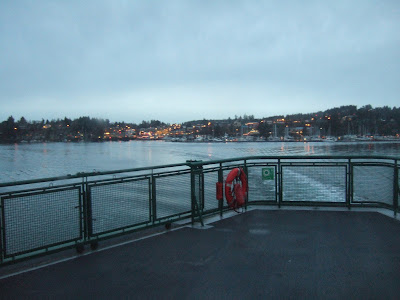 |
The Borealis Glacier is located above the confluence of Thunder Creek and McAllister Creek. This glacier has a terminus elevation slightly above 6,000 feet. Its accumulation area extends up to about 7,600 feet. The lower part of the glacier as can be seen on the above topo is very gentle and has been fed by ice falls, two of which are contiguous with the lower glacier, from the higher steep glacial area above.
Although the Borealis Glacier is located along a high glacier clad spine of the North Cascades, the glacier is located on the dry side of that spine and precipitation drops off significantly to the east. The next ridge over has much more limited glacial ice. The slopes below the Borealis to the east and northeast have forests that have burned on a frequent basis.
A review of historic aerials indicates that the area covered by the Borealis of glacier did not change much between 1950 and 1990.
1950
1979
1990
The lack of trees and vegetation around the perimeter of the glacier suggests that it previously extended further east and north. The vegetation has been slow to reestablish as much of the area is bare rock and this area is over 6,000 feet and well back within the range such that winters are much colder. This area is getting into one of the few areas in Washington State where there is a true tree line in the mountains - a tree line defined by cold temperatures versus simply too much snow.
I got to know the Borealis Glacier rather well as I camped for nearly a week adjacent to the glacier and walked across it every day. It was on the Borealis that I encountered my first Moulin. I even ventured up to the top part of the glacier with crampons and ice axe. That venture was rewarded with finding golf ball sized garnets.
Large garnet in pegmatite
At the time I had a general sense that the lower Borealis was wasting and that the supply of ice from the upper glacier area was not enough to maintain the lower glacier. But that was only a guess based on one summer observation. However, subsequent imagery shows that indeed the Borealis is in major retreat. My short cut across the glacier from my old camp site has turned into a lake.
2009
One final personal memory note. This trip was a solo venture. Sadly I had a camera/film issue and have no pictures from that venture other than rather dull geology pictures of rocks (that was my purpose). While the solo glacier traverses with crampons and ice axe to the high ridge line may seem dangerous, the hike out through the forested slopes below may have been the most dangerous hike I have ever done. Descending into thick cliffy forests makes route finding seem like a lot of lucky guesses and forces routes towards very uncertain directions. In the end I ended up reaching the valley floor about a mile further west than my initial intent, but greatly relieved to have gotten down without having to spend the night on the slope or doing any significant back tracks.






















































